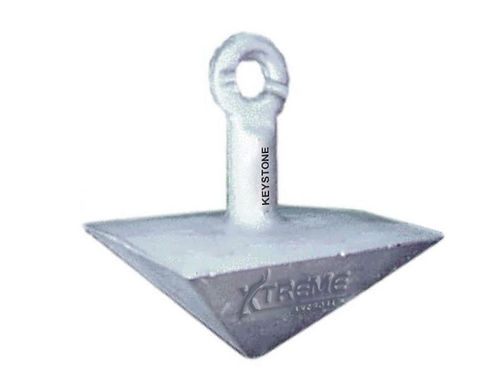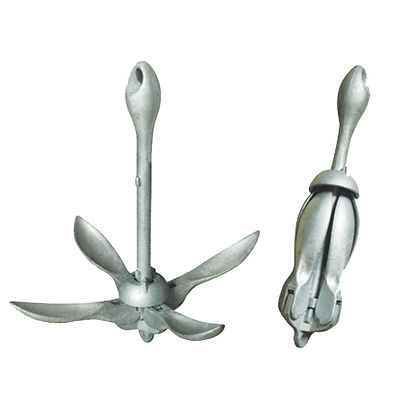
Keystone Supplies Company has been run by a Canadian family for four generations, and has been selling the XtremeAnchors cast steel anchors for over 20 years to hold buoys on station.
The Canadian Coast Guard uses these anchors for securing their floating aids to navigation to the sea bottom exactly on station. They are used in both the Atlantic and Pacific and in even in violent sea locations off of Newfoundland and Haida Gwaii.
The efficiency of these anchors can be seen in that the deep sea buoys are positioned and remain on site for five years prior to being lifted and serviced. The large 14 ton whistle buoys and the 9 ton bell buoys are exposed to ocean currents and storms yet remain on site, on station. This provides a perfect real world example of the holding power of these anchors.
These anchors will last decades.
Further, these anchors do not drag as a buoy is of no value if it is not on station. In fact a buoy could signal a vessel into trouble if it was swept off station. The Canadian Coast Guard has standardized on these anchors.
The holding power of an anchor is mainly determined by the breaking strength of its anchor chain.


High Draft Anchor
Specifications

Low Draft Anchor
Specifications
XtremeAnchors vs Fluke, Plow
-
XtremeAnchors drops right on target and does not require scope to set
-
XtremeAnchors needs only enough line to accommodate tide and storm surges
XtremeAnchors vs Concrete
-
The XtremeAnchors has the advantage of being lighter than the concrete anchors previously used to obtain the same holding power based on mass
-
XtremeAnchors has teeth and sharp edges and will not drag as a concrete anchor drags. Durable sharp edges and teeth are not castable into concrete
-
XtremeAnchors will weigh close to the same in air as water unlike concrete
-
XtremeAnchors takes much less deck space and is lighter than concrete
-
XtremeAnchors has much longer life than concrete. Seawater does not dissolve XtremeAnchors but only oxidizes it very, very slowly
-
A 5,000 kg XtremeAnchors is equivalent in mass to a 7,500 kg concrete anchor; and the volume of XtremeAnchors is way less than concrete
Technical details:
-
A 1,000 lbs concrete block has a volume of 6.9 cubic feet, which displaces 430 lbs of water which gives you 570 net pounds of weight to secure the buoy
-
A 1,000 lbs steel anchor has a volume of 2.06 cubic feet, which displaces 128.5 lbs of water which gives you 871 net pounds of holding weight to secure the buoy
-
Specific gravity of water 62.4 lbs per cubic ft; Concrete 145 lbs per cubic ft; Steel 486.7 lbs per cubic ft
-
In addition, a steel anchor does not leach away weight over time and can be cast to have an edge that will grip the bottom

The Xtreme Pyramid Anchor is a one-piece cast iron permanent mooring/anchor. The shape of the anchor allows for the anchor to completely embed itself into the sea floor. The high point loading allows the Xtreme Pyramid Anchor to rapidly penetrate the bottom of the seafloor. Once the Xtreme Pyramid Anchor is completely covered, the large surface area of the top of the pyramid creates a high suction effect which increased the deeper it sets. It can be used in both fresh and saltwater.
Pyramid Anchor

Galvanized Folding Anchor
The Xtreme Folding Anchor can be used unfolded or folded for easy storage. We offer sizes from 1.5 lbs through 33 lbs. Contact us for special size requests.

Fluke Anchor
The Xtreme Fluke Anchor can be stored flat, is light weight and easy to use. We offer sizes 10kg, 15kg and 20kg. Contact us for special size requests.
